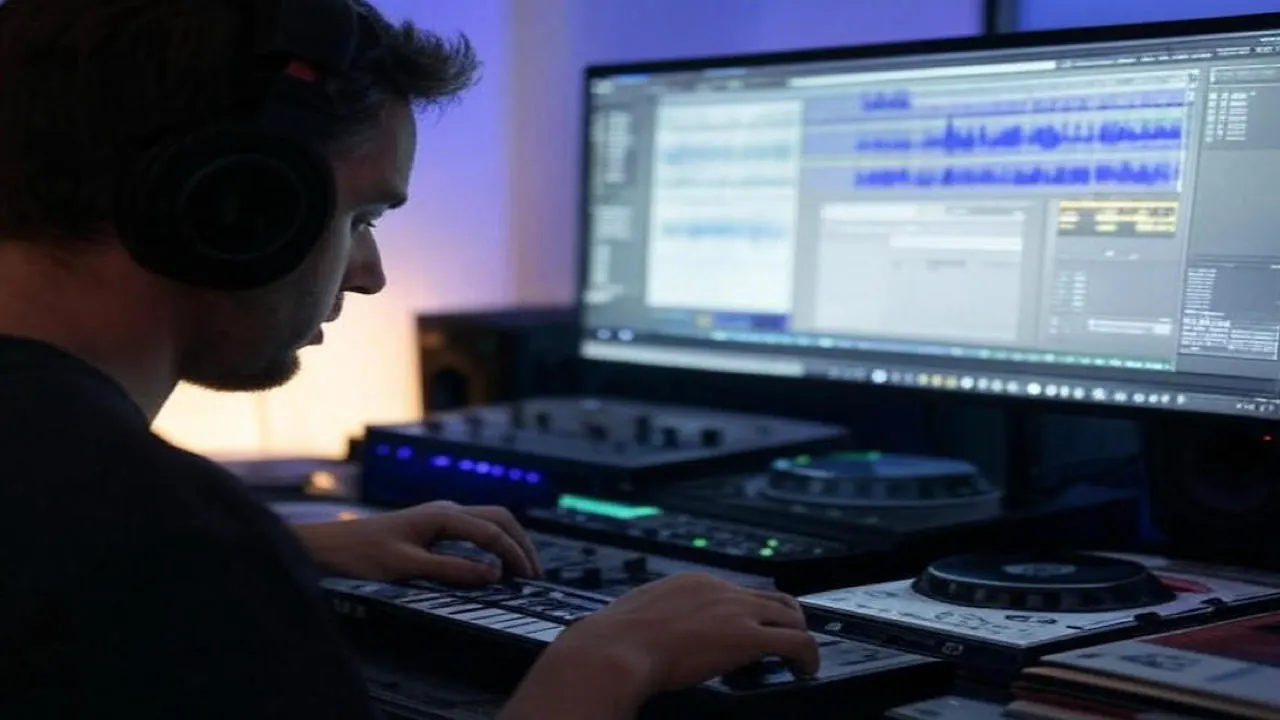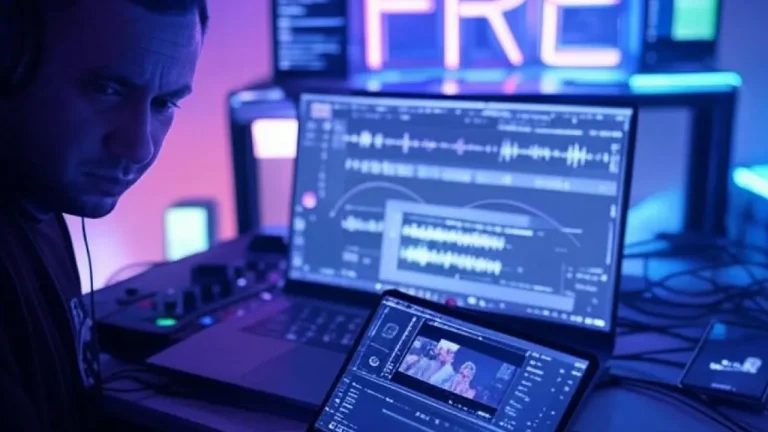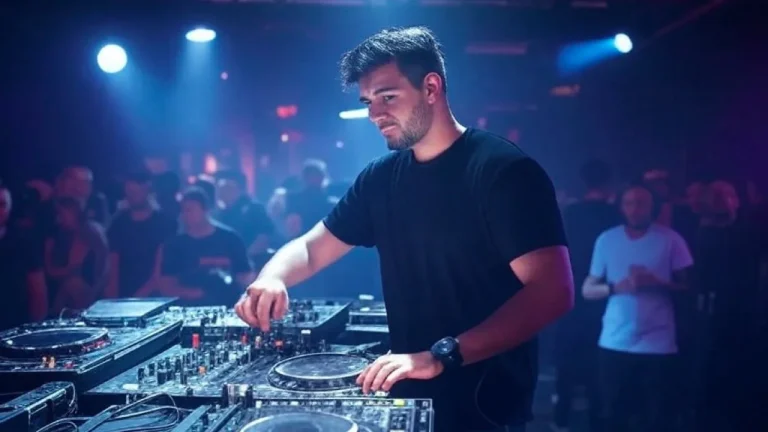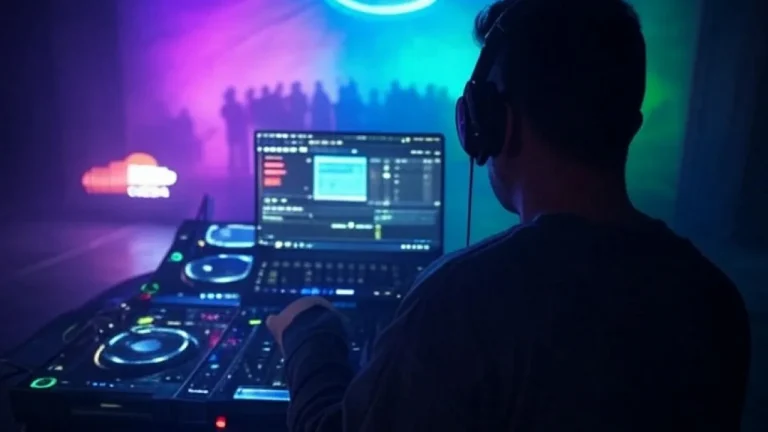Remix creation basics involve isolating original song stems, rearranging musical elements, and adding new instruments or beats to create fresh versions. Remixing takes an original song and alters components like tempo, sections, and instrumentation to produce entirely new versions.
How to Start Remix Creation Basics
Choose songs with clear instrumental separation and strong vocal hooks for your first remix projects. Popular tracks with recognizable melodies work best because audiences connect with familiar elements while experiencing new arrangements.
Additionally, beginners should focus on these core elements:
- Acquire high-quality stems or multitrack recordings
- Select appropriate digital audio workstation software
- Learn basic tempo manipulation and time-stretching
- Practice isolating individual track components
Essential Software Tools for Remix Creation
Fadr offers free AI-powered stem separation and remix creation tools for beginners starting their remix journey. The platform provides vocal removal, song splitting, key detection, and remix generation with 95% of features available for unlimited free use.
| Software | Price Range | Best Feature |
|---|---|---|
| Fadr | Free | AI stem separation |
| DJ.Studio | $19/month | Professional stem quality |
| FL Studio | $99-199 | Integrated workflow |
| Ableton Live | $99-749 | Live performance features |
Stem Separation Technology Advances
Modern AI algorithms extract drums, bass, vocals, and melody tracks with 90% accuracy compared to previous manual methods. Stem separation has evolved from specialized software to browser-based services and VST plugins integrated directly into major DAWs.
Professional producers use these separation methods:
- Phase inversion techniques for vocal isolation
- Machine learning algorithms for instrument identification
- Spectral analysis for frequency-based separation
- Neural network processing for clean audio extraction
Legal Requirements for Remix Creation Basics
Obtain proper licensing or permission before remixing copyrighted material to avoid legal issues. Legal remixing requires purchasing the original song and obtaining permission from copyright holders.
Copyright considerations include:
- Mechanical licenses for distributing remixed versions
- Synchronization rights for video content usage
- Performance licenses for public performances
- Master recording rights from original label owners
Safe Remix Creation Practices
Use royalty-free samples and Creative Commons licensed tracks for practice and portfolio development. Many websites provide legal stem packs specifically designed for remix creation without copyright restrictions.
Legal alternatives include:
- Remix contests with provided official stems
- Independent artist collaboration agreements
- Sample library subscriptions like Splice or Loopmasters
- Original composition elements mixed with public domain recordings
Technical Steps in Remix Creation Basics
Import original stems into your DAW and organize tracks by instrument type before making any modifications. Official remixes typically start with the original artist providing stems to the remixer.
| Step | Process | Time Required |
|---|---|---|
| 1. Stem Preparation | Import and organize tracks | 15-30 minutes |
| 2. Tempo Analysis | Detect BPM and time signature | 5-10 minutes |
| 3. Key Detection | Identify musical key and scale | 5-10 minutes |
| 4. Arrangement Planning | Sketch new song structure | 30-60 minutes |
Audio Processing Techniques
Apply EQ adjustments to separate frequency ranges between different elements and prevent muddy mixes. Cut unnecessary low frequencies from vocals while boosting presence frequencies around 2-5 kHz for clarity.
Professional processing methods include:
- High-pass filtering on non-bass elements above 80 Hz
- Compression settings with 3:1 ratio for vocal consistency
- Reverb removal using spectral editing tools
- Stereo width adjustment for spatial positioning
Creative Arrangement in Remix Creation
Rearrange song sections to create new energy patterns and emotional progressions that differ from the original structure. Start with verse-chorus combinations before experimenting with bridge placements and instrumental breaks.
Popular arrangement modifications include:
- Extended introductions with filtered elements
- Breakdown sections featuring isolated vocals
- Build-ups using reversed audio and rising filters
- Drop variations with different rhythmic patterns
Adding Original Elements
Layer new drum patterns, bass lines, and synthesizer parts to complement existing vocals and melodies. Keep original vocal timing intact while creating supporting instrumentation that enhances the track’s energy.
Common additions include:
- 808 drum patterns for modern hip-hop feels
- Analog synthesizer stabs for electronic energy
- Orchestral strings for emotional depth
- Percussion loops for rhythmic complexity
Mixing and Mastering Remix Basics
Balance individual stem levels using reference tracks in similar genres to achieve professional sound quality. Professional remixes maintain consistent volume levels while preserving dynamic range throughout different song sections.
Mixing fundamentals include:
- Set kick drums and bass elements as foundation levels
- Position vocals prominently in the frequency spectrum
- Pan instruments across stereo field for width
- Apply subtle compression for cohesive glue
Final Output Preparation
Export remixes at 24-bit/44.1 kHz minimum resolution for distribution platforms and DJ usage. Higher sample rates like 48 kHz work better for video synchronization and professional broadcasting applications.
Distribution formats include:
- WAV files for DJ performances and radio play
- MP3 320 kbps for streaming platform uploads
- FLAC format for audiophile listeners
- Stem files for other remixers and collaborators
Common Remix Creation Mistakes
Avoid overusing the original vocal throughout the entire remix without creating breathing space or instrumental sections. Using low-quality stems creates tinny, hollow sounds that lack the fullness of original recordings.
Frequent beginner errors include:
- Ignoring tempo changes between different song sections
- Clashing key signatures when adding new musical elements
- Over-compressing dynamics and removing natural punch
- Neglecting proper gain staging throughout the mix process
People Also Ask
Free options like Fadr provide AI stem separation and basic remix tools, while professional DAWs like FL Studio or Ableton Live offer advanced editing capabilities. Most beginners can start with free software before investing in premium tools.
Basic remix skills develop within 2-3 months of consistent practice, with advanced techniques requiring 6-12 months. Focus on one remix project per week to build fundamental skills progressively.
AI stem separation tools extract individual instruments from finished tracks with increasing accuracy. While official stems provide better quality, modern separation technology creates usable results for remix practice.
Pop, hip-hop, and electronic dance music offer clear structure and recognizable elements perfect for learning. These genres typically feature prominent vocals and defined instrumental sections ideal for rearrangement.
Frequently Asked Questions
Official remix contests provide high-quality stems directly from artists and labels. Additionally, platforms like SongStems.net and Splice offer legal multitrack downloads for remix purposes.
Match your target genre’s typical tempo range rather than maintaining the original song’s BPM. Electronic dance remixes often work between 120-130 BPM, while hip-hop remixes suit 70-90 BPM ranges.
Successful remixes maintain recognizable vocal melodies while completely restructuring instrumental arrangements. Keep vocal timing and key signature intact for listener familiarity.
Computer software handles most remix creation tasks without additional hardware. Quality headphones and audio interface improve monitoring accuracy but aren’t required for learning basic techniques.
Compare your remix levels and frequency balance against commercial releases in similar genres. Professional remixes maintain consistent loudness while preserving dynamic range and vocal clarity.
Master remix creation basics by starting with mixing your first track and advancing through creative transition techniques. Build your skills with harmonic mixing fundamentals and explore multi-genre blending approaches.
Professional remix creation combines technical knowledge with artistic vision. Practice consistently with proper recording techniques and develop your signature sound through experimentation. Remember that successful remixes balance familiar elements with fresh creative interpretations that engage listeners.







